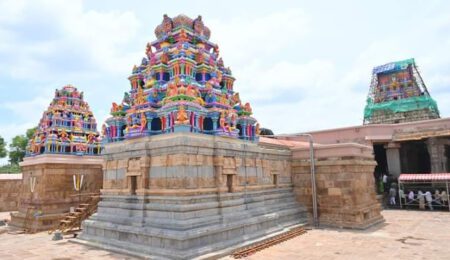Difference Between Kirtan and Bhajan 2025
Difference between Kirtan and Bhajan
Difference between Kirtan and Bhajan | Indian devotional music has a rich tradition with various forms of spiritual expressions. Two of the most popular forms of devotional singing are Kirtan and Bhajan. While both involve singing praises of deities, they differ in structure, style, and purpose. In this article, we will explore the key differences between Kirtan and Bhajan, their origins, significance, and how they are performed in various spiritual traditions.
What is Kirtan?
Kirtan is a call-and-response style of devotional singing, where a lead singer chants a line or phrase, and the congregation responds in unison. It is often accompanied by musical instruments such as harmonium, mridangam, tabla, dholak, and kartal. Kirtan is known for its energetic and rhythmic style, which encourages participation and creates a meditative atmosphere.
Origin of Kirtan
Kirtan traces its roots back to ancient Vedic traditions and the Bhakti movement that flourished in medieval India. Saints like Tulsidas, Meerabai, Namdev, and Chaitanya Mahaprabhu popularized Kirtan as a way to attain spiritual enlightenment and connect with the divine.
Key Features of Kirtan
- Call-and-Response Format: The lead singer chants a line, and the devotees repeat it in chorus.
- Energetic & Rhythmic: The music gradually intensifies, creating a powerful devotional experience.
- Group Participation: Kirtan is meant to be sung collectively, promoting unity and devotion.
- Long Duration: Sessions can last for several hours, creating a deep spiritual connection.
- Instruments Used: Typically performed with harmonium, tabla, mridangam, kartal, and dholak.
Types of Kirtan
- Nam Kirtan: Focuses on chanting the divine names of deities, e.g., “Hare Krishna Hare Rama” mantra.
- Leela Kirtan: Narrates stories of gods and goddesses through music.
- Dhun Kirtan: Repetitive chanting of short phrases or mantras for meditation.
What is Bhajan?
Bhajan is a devotional song that expresses love, devotion, and reverence for a deity. Unlike Kirtan, Bhajans are more melodious and lyrical, often sung solo or in a group setting. The lyrics of Bhajans are deeply poetic and philosophical, conveying messages of devotion and surrender to the divine.
Origin of Bhajan
The term Bhajan originates from the Sanskrit word “Bhaj”, meaning to worship or adore. It has been a part of Hindu traditions for centuries and was further promoted during the Bhakti movement by saints like Surdas, Kabir, and Tulsidas.
Key Features of Bhajan
- Melodious and Emotional: Bhajans are sung with deep devotion and express heartfelt emotions.
- Fixed Lyrics: Unlike Kirtan, Bhajans have structured lyrics that are not repetitive.
- Solo or Group Performance: Can be sung individually or in a group setting.
- Mild and Slow-Paced: Bhajans have a soothing effect and are less energetic compared to Kirtan.
- Accompanied by Instruments: Common instruments include harmonium, tabla, veena, and tanpura.
Types of Bhajan
- Traditional Bhajans: Composed by saints like Kabir, Tulsidas, Meerabai, and Surdas.
- Folk Bhajans: Regional devotional songs sung in various Indian languages.
- Classical Bhajans: Based on Hindustani or Carnatic music.
- Film Bhajans: Popular devotional songs featured in Bollywood movies.
Kirtan vs. Bhajan: Key Differences
| Feature | Kirtan | Bhajan |
|---|---|---|
| Format | Call-and-response style | Solo or group singing |
| Rhythm | Energetic and repetitive | Melodious and structured |
| Duration | Long and dynamic | Shorter and steady |
| Lyrics | Simple and repetitive | Philosophical and poetic |
| Participation | Group participation is essential | Can be sung solo or in a group |
| Instrumentation | Includes mridangam, kartal, dholak | Uses harmonium, veena, tabla |
| Emotional Expression | Enthusiastic and celebratory | Soulful and meditative |
Importance of Kirtan and Bhajan in Spiritual Practice
Both Kirtan and Bhajan play a significant role in spiritual growth and devotion.
Benefits of Kirtan
- Enhances Collective Devotion: Encourages group participation and creates a strong community bond.
- Increases Energy & Enthusiasm: The rhythmic nature uplifts the spirit and brings joy.
- Aids in Meditation: Repetitive chanting helps in achieving deep concentration.
- Removes Negative Emotions: Promotes positivity, reducing stress and anxiety.
Benefits of Bhajan
- Promotes Inner Peace: The soothing nature of Bhajans calms the mind.
- Deepens Spiritual Connection: Encourages personal devotion and surrender to the divine.
- Inspires Moral Values: Bhajan lyrics convey wisdom and life lessons.
- Suitable for All Ages: Bhajans can be enjoyed by people of all age groups.
Popular Kirtan and Bhajan Traditions in India
- ISKCON (Hare Krishna Movement): Known for its high-energy Nam Kirtan.
- Sikh Kirtan (Gurbani Kirtan): A fundamental part of Sikh religious practices.
- Vaishnav Kirtan: Focused on Lord Krishna and Rama.
- Meerabai’s Bhajans: Songs expressing deep love and devotion to Lord Krishna.
- Kabir Bhajans: Philosophical Bhajans with profound messages.
How to Experience the Bliss of Kirtan and Bhajan?
- Attend Live Kirtan or Bhajan Sessions: Join temple gatherings or spiritual events.
- Listen to Recorded Kirtans and Bhajans: Available on YouTube, Spotify, and devotional apps.
- Sing Along at Home: Create a peaceful environment and practice regularly.
- Join a Bhakti Group: Participate in local devotional groups or satsangs.
Conclusion
While both Kirtan and Bhajan serve the purpose of devotion and spiritual upliftment, they cater to different moods and preferences. If you enjoy energetic, participatory worship, Kirtan is ideal. If you prefer deep, emotional, and lyrical devotion, Bhajan is the perfect choice. Ultimately, both are powerful tools for connecting with the divine, finding inner peace, and cultivating a devotional mindset.
Which one do you prefer—Kirtan or Bhajan? Let us know in the comments below!



